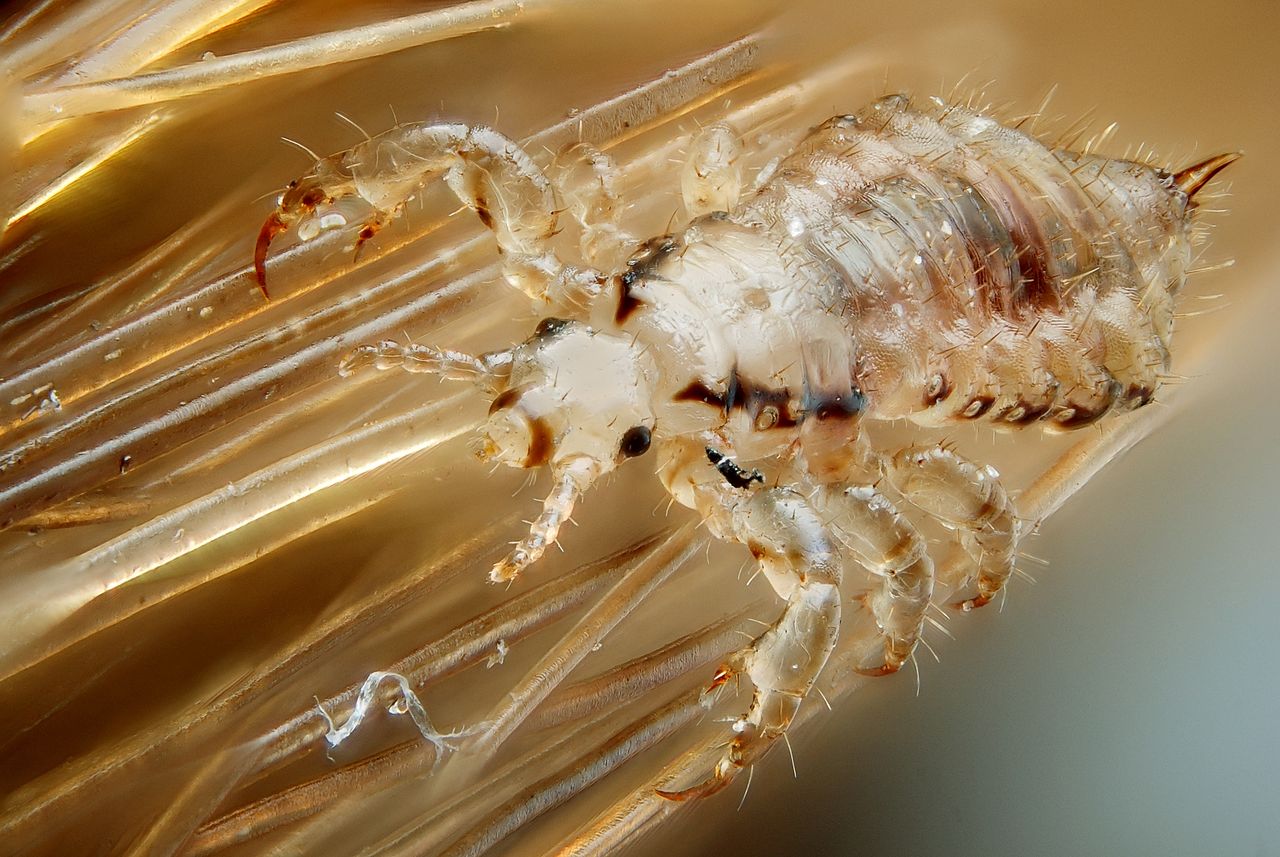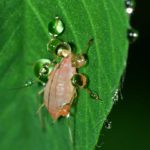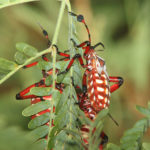
Just thinking about head lice can be enough to make our skin crawl. These tiny, wingless parasites make themselves at home on human scalps. Read on to learn more about head lice and how to control them.

Adult head lice are about the size of a sesame seed, between 2-4 millimeters long. They don’t have wings so they can’t fly, and they crawl instead of jumping or hopping. Dr. Dawn Gouge, urban entomology specialist with the University of Arizona Cooperative Extension service, says they use claws at the end of their six legs to grab onto hair.
They can be hard to detect, Gouge says “Head lice crawl across the scalp quickly, and will rapidly move away from bright light so when you are looking through a head of thick hair it can be challenging to see the adults or the immature nymphs.”
Lice eggs are called nits. They’re small — about 1/16th of an inch long. They cement to human hair close to the scalp with a glue-like substance. Their life cycle is a rapid one: “Developing lice, or nymphs, take about seven to 10 days to mature; after an additional day, the adult females start laying eggs. Lice live for three to four weeks, and adult females can lay about 100 eggs before they die,” Gouge says.
How Lice Feed on You
So how do lice survive? Gouge says they feed on the blood beneath the surface of the scalp. She says a newly hatched louse has to feed within minutes of hatching to survive, and they need the warmth of the scalp to grow. The process continues from there. They “take tiny blood-meals every few hours, injecting saliva into the skin as they feed,” Gouge says. The saliva injections are the reason why scalps can get itchy and irritated. Lice can only survive for about 48 hours if they fall off their human host.
An itchy scalp is the biggest signal of an infestation, especially on the back of the head or neck. This usually happens one to six weeks after lice take up residence on a person’s scalp. “It takes that amount of time for sensitivity to louse saliva to develop. However, if a person has already been a host for head lice previously, itching can begin right away. Secondary infections from scratching may also occur,” Gouge says.
Lice do not spread disease on their own. They also don’t move from pets or animals to humans. “Head lice transfer from an infested head onto a new host through direct head-to-head (hair-to-hair) contact, commonly when people are close together, share pillows or recently contaminated objects,” Gouge says. Those recently contaminated objects can include hats, coats, headbands, combs, and brushes. This is less common than head-to-head contact, but it can happen.
Controlling Head Lice
The first step in controlling head lice is identifying an infestation. Gouge says doing this requires finding a living louse crawling on the scalp. “Just the presence of nits is not a reliable indication of an active infestation that needs to be treated. Often nits die and all too often unnecessary treatments are made on people due to the historical remains of prior infestations long gone,” she says.
Gouge takes exception to the “no-nit” policies in place in many schools. “A lot of students are sent home from schools despite the fact that there is no scientific reason to do so. The American Academy of Pediatrics and many other organizations oppose “no-nit” policies because they make “no sense,” she says.
You’ll save yourself a lot of anguish and agony (and possibly money) by inspecting your kids’ scalps every so often for lice. This requires a lot less time and effort than dealing with a full-blown infestation. During the first few months of school, it’s a good idea to check for lice weekly.
Treatment Options
If you’ve detected an infestation, there are many treatment options available. Some are more effective than others. Complicating the issue is the emergence of “super lice.” These are lice that are resistant to common treatments. Arizona is one of the states where 100 percent of sampled lice were resistant. This resistance happens often with products containing pyrethroids, one of the most common ingredients in over-the-counter treatments. Newer prescription treatments can be more effective. No matter which treatment you choose, follow the instructions carefully and apply it only to the scalp. After treatment, check for remaining lice or nits with a fine-toothed metal comb for the next 10-14 days or until the infestation is gone.
To help prevent a re-infestation, be sure you get rid of any lice in the home. Wash the child’s clothes and any towels, bedding or blankets used by the child. Dry them completely in the dryer so the heat can kill any lice and nits. Put any nonwashable items in a plastic bag and close it up for at least 48 hours. Vacuum furniture or carpets where your child sleeps or lays down. You could also make these areas off-limits for at least 48 hours to allow any remaining lice to die. It is not necessary to treat your entire home for lice.
Taking these steps to treat and prevent future infestations can help you control lice. With regular checks, you can stay a step ahead of these tiny creatures before they become a bigger problem.
Main image credit: Giles San Martin, CC by SA 2.0.





